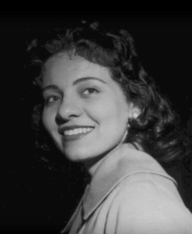Diane Nash
- Hayeon Kwak

- Dec 8, 2023
- 4 min read
Updated: Jul 16, 2024
"There is a source of power in each of us that we don't realize until we take responsibility." - Diane Nash
DOB: May 15, 1938
Nationality: American
Broken windows, fires, unbridled rage. In the face of such danger, Diane Nash remained a rock. Solid and unmoving, she led civil rights movements society couldn’t ignore, pebbles in its gearwheels forcing everyone to a grinding stop to listen.
On May 15, 1938, Diane Nash was born to a catholic, middle-class household in Chicago, Illinois. She attended public and catholic schools as a child, won beauty contests, and at one point, explored the idea of becoming a nun. Her life in Chicago had sheltered her from the harsh realities of racism and segregation until she transferred from Howard University in Washington D.C to Fisk University in Nashville, Tennessee.
The full effect of the Jim Crow laws forced her into a new way of living and thinking her life in Chicago left her completely unfamiliar with it. And she refused to bow down to the way of life in Nashville. Nash found the ridiculous Jim Crow system infuriating and felt “like [she] was somehow agreeing [she] was inferior” every time she obeyed a segregation rule. Nash sought out ways to bring change immediately and discovered nonviolence workshops led by Reverend James Lawson near her campus and organizations fighting against segregation.
Rev. James Lawson, her first tutor in the civil rights movement, taught lessons on nonviolence Nash would carry for the rest of her life. Lawson studied Gandhi’s nonviolent movement in India, and strongly believed progress could and should be demanded without violence. Nash, initially skeptical of nonviolence, was convinced by Lawson through his workshops and eventually became a crucial figure in nonviolent civil rights movements.
Nash’s first practice of nonviolent protest happened through sit-ins in local department stores through the Student Central Committee in Nashville. Nash and fellow members of the Student Central Committee carried out sit-ins in restaurants as well in an attempt to desegregate the lunch counters. The group’s boycotts of downtown restaurants forced white owners to get involved, and willing to negotiate. Conversations between the students and restaurant owners led to the discovery that the white restaurant owners were afraid to desegregate because of potential white boycotts. The Student Central Committee took the restaurant owners’ concerns seriously and adjusted their sit-in tactics. The students integrated white women into their demonstrations. These “dignified-looking” middle-aged white women would soften the blow of desegregation and reduce complete boycotts by white customers. The group’s peaceful and smart tactics not only landed them many peaceful desegregations but even won over new allies of the Nashville Student Movement’s desegregation campaign.
The many student-led sit-ins by both the Student Central Committee and others in Greensboro, North Carolina, inspired influential activist Ella Baker to call a meeting for student activists at Shaw University in Raleigh, not to recruit them to large and detached civil rights organizations in the east, but to encourage the over 200 student attendees to take charge, collaborate, and fight for what they believed in with their own power. The result was the Student Nonviolent Coordinating Committee (SNCC). Nash attended the meeting in Raleigh and continued to coordinate student efforts through the committee. Nash and the students’ commitment to “jail without bail” when arrested for their sit-ins in support of the “Rock Hill Nine” called immense attention to their cause. The students' method of committing to serving the time they were sentenced instead of paying the bail fee in order to reach communities caught the attention of Martin Luther King, who wrote to Nash and her fellow student protestors, praising their inspiring “courage and faith.”
Nash played a crucial role in her community in Nashville as a founding member of the SNCC to sustain the Freedom Rides organized by the Congress of Racial Equality. Her job was to organize students and other volunteers, black or white, to ride a bus together, challenging segregation on interstate buses and terminals. However, only a few days before the planned ride in Nashville, a group of Freedom Riders in Alabama were attacked by an angry mob. The activists’ bus was attacked as they pulled into a station– a mob wielding bricks, bats, and other weapons slashed the bus’s tires and set the bus on fire. The freedom riders, after narrowly escaping with their lives, had no choice but to abandon the campaign. The event shocked activists across the country, and the Freedom Riders movement seemed to come to an untimely end. However, Nash led her Nashville activists nonetheless to restart the Freedom Rides. When John Seigenthaler, messaged Nash’s group of Freedom Riders urging them to retreat and cancel their ride, Nash simply replied with unwavering determination: “We all signed out last wills and testaments last night [...] We cannot let violence overcome non-violence.” She later led all future Freedom Rides in 1961. Her bravery and commitment led to a victory for the Civil Rights Movement, as the Interstate Commerce Commission declared segregated bus travel illegal by November of 1961.
A description of her contributions to the Civil Rights Movement portrays Diane Nash as an untouchable, fearless leader. However, Nash later revealed she was afraid the whole time when faced with years of jail, angry mobs, and had her voice drowned out by male colleagues in the same organizations. Yet she had refused to back down, determined to bring change as an individual as much as she could instead of waiting for permission or leadership from elected officials.
Written by Hayeon Kwak
Links to other resources:
https://snccdigital.org/people/diane-nash-bevel/
https://www.history.com/news/diane-nash-freedom-rider-civil-rights-movement
https://kinginstitute.stanford.edu/nash-diane-judith
https://www.civilandhumanrights.org/fw-diane-nash/
https://www.biography.com/activists/diane-nash







Comments